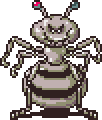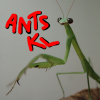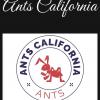Next month will be the one-year point at which I began ant keeping. I started with a single Lasius neoniger queen that overwintered and then began her colony earlier this spring. The modest success I seemed to have with her, led me to be more observant this summer and attempt to collect different species of ants.
I was successful in collecting the following during the summer of 2021:
x1 Lasius sp. queen (possibly americanus or neoniger)
x1 Crematogaster sp. queen
x1 Pheidole sp. queen
x4 Tetramorium immigrans queens
With these additional seven ant queens now in my possession, I constructed a small incubator out of a styrofoam box and a heating cable. The incubator stays dark (unless I open the lid to check on them) and the heating cable keeps the interior at 82-84 F. All of the ants are contained in glass test tubes with cotton balls, distilled water, and dry cotton stoppers. Overall, the ants seem to be doing OK.
They have all laid eggs now except for the Lasius sp. but she was only caught ~10 days ago. Specifically, the Tetramorium immigrans and developing quite fast (they already have callows) and I only caught them about a month ago.
One observation I have made involves the Pheidole sp. queen. She seems to have laid eggs sporadically around the interior of the test tube. That is, they are all spread out and not clumped together. The other species all seem to lay their eggs and brood in neat little piles.
Why would the Pheidole sp. queen do this? Is this behavior typical to this species? Is this egg laying behavior indicative of a lack of fertilization or perhaps stress?
Any additional info that could be provided would be greatly appreciated.
Thank you in advance.




















